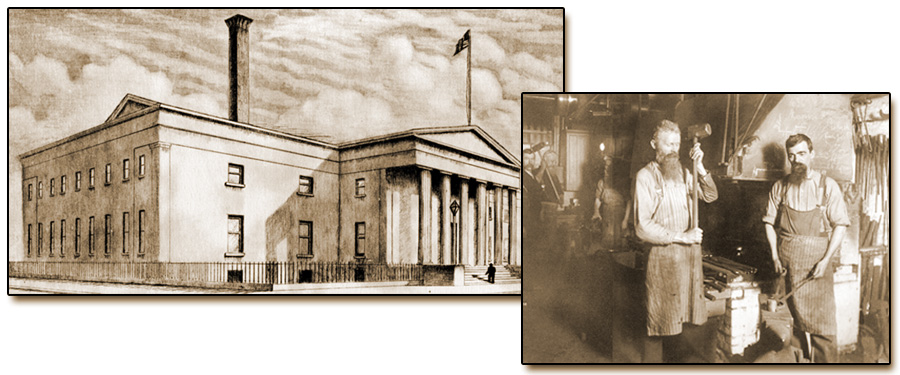
Philadelphia, Jan. 9 —
These are busy days at the United States Mint in a department which is busy at
but one season at the year, and a short season at that.
Perhaps everybody doesn’t
stop to think about it, but, nevertheless, with the last day of each recurring
year the dies used by the Government’s metal money manufacturers pass into a
state of innocuous desuetude. This is not so much on account of any defect in
the dies as on account of the fact that the date inscribed on each is good only
for the twelvemonth it represents. For instance, the dies which stamp upon the
gold, silver and copper coins the legend 1897 are no good as far as the issues
of 1898 are concerned.
Hence it is that after
the midnight hour of 1897 new stamps for converting the various metals into the
coin of the realm were necessary.
Strangely enough, there
is little or no demand for the first coins of each denomination turned out each
year. This is probably because the public doesn’t understand the process of
transition from old coins to new. Another reason may lie in the fact that the
first coin struck from each die is accorded no more recognition on the part of
the mint employees than the second or the fifth or the seventy-sixth. Therefore,
it would be extremely difficult to pick out the exact “first coin,” of any
denomination. The number of dies used up at the Philadelphia Mint in the course
of a year is interesting. During 1897 in making double eagles, or $20 gold
pieces, twenty-one “obverse” dies and sixteen “reverse” dies were knocked into
smithereens, or otherwise sued up; in making eagles or $10 gold pieces the
number was twenty “obverse” and twenty-one “reverse”; for half eagles, or $5
gold pieces nine “obverse” and ten “reverse”; quarter eagles, or $2.50 gold
pieces, one “obverse” and one “reverse.” Very few of the last-named coins are
made nowadays, however. In silver coins, for dollars, thirteen “obverse” and
twelve “reverse” dies were used; for half dollars, fifteen of each kind of
dies; for quarter dollars, fifty-five “obverse and forty-four “reverse” had to
be made, while in the making of dimes seventy-three “obverse” and fifty-two
“reverse” were worn out. Nickel coins used up ninety-nine “reverse” dies and
ninety-six “obverse” and copper coins, or one-cent pieces, required 160 “obverse”
and 140 “reverse.”
In addition to the above
there were an “obverse” and one “reverse” proof dies for each coin of each
denomination. This made a grand total of 895 dies used during the year, each of
which was “smashed in the head” Monday. The total number of pieces turned out
from them was 98,549,746, and the total amount coined represented a value of
$51,071,582.57.





